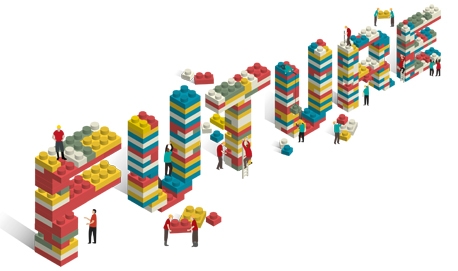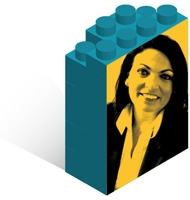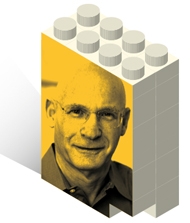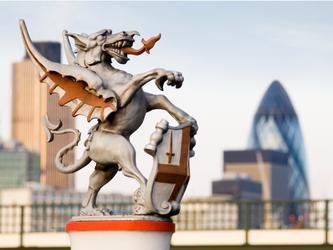Building the future

Here’s a nice definition to get us started. “In the commercial world, insight is the raw material you gather about today – and foresight is what you make of those insights, what causes you to make decisions about the future. It’s compelling – and it ought to be ongoing and systemic.”
It comes from David Smith, CEO of Global Futures and Foresight (GFF) – and he’s had about 30 years to come up with a decent definition. But even he concedes that the term is tough to pin down. And, what’s worse, foresight is rarely done well.
“In the commercial world, insight is the raw material you gather about today – and foresight is what you make of those insights”
“There’s certainly a value in seeing what’s happening around us – and trying to work out what’s happening next,” Smith says. “The problem is that foresight is rarely a joined-up process within organisations – and to come up with precise forecasts, you’re relying on every component of your assumptions being right. Still, after three decades in the business, my own view is that it’s better to be vaguely right than precisely wrong.”

Roisin Donnelly (left), corporate marketing director and head of marketing at Procter & Gamble (P&G) in the UK and Ireland, goes a step further. For her, at the frontline, foresight “is the ability to anticipate shifts in trends, behaviours and preferences to inform and adapt our strategies as we move forward.” Her business is all about the long game – brands to last the ages – so her version is necessarily much broader.
Short-foresighted?
But not everyone is so generous in their definition. “To me, foresight is predicting the immediate future,” says Clive Humby, co-founder of Dunnhumby and H&D Ventures. “The danger is that people think that foresight is about understanding the longer-term consequences of decisions – and I don’t think it’s useful outside the near future for most organisations.”
The ‘sight’ bit, he goes on, suggests quantification. “It says, ‘We want to understand consequences in a measured way’. But exact future outcomes are just too complicated to work within that kind of modelling. So foresight is really just a prediction of a zone in which the future lies.”
In any case, seeing the future is only half the battle. “It’s something of a myth to say that large organisations get into trouble thanks to ‘unforeseen’ trends or events,” says Patrick Barwise, professor of management and
marketing at London Business School. “I don’t think that’s often the case. For example, Kodak could see digital photography coming a long way off. Foresight wasn’t the problem – it was how the company responded to it.”
“The idea that we might understand the future is attractive to human beings. We just don’t like the idea that the world is unpredictable”
The two can come together. P&G’s approach, for instance, is clearly rooted in action. “Foresight is not an end in itself but needs to be integrated into planning business strategies,” says Donnelly. And it takes different forms – although they all feed through the company’s Consumer and Market Knowledge Team into the board.
“In Beauty and Fragrance, it’s important to understand fashion and lifestyle, so we work with a range of experts and scouts globally,” she explains. “In Fabric and Home we are working with our suppliers and appliance manufacturers to create a total experience to better meet consumer needs. Corporately, we are working with environmental experts to design more sustainable products. We are also working with our retailers to innovate for our shoppers online and in stores.”

But outside those clear and practical aims, our ability to use foresight is often clouded by basic insecurity. “The very idea that we might understand the future is fundamentally attractive to human beings,” says Steve Morlidge, former Unilever finance leader, who now specialises in forecasting and sits on the editorial board of Foresight magazine. “We just don’t like the idea that the world is unpredictable.”
Historical foresight
And that’s the nub of the problem with foresight. People want certainty. “Between the 1950s and 1970s, you had a lot of people working on macro views of the future, predicting big trends and technological developments,” says GFF’s Smith. “Futureshock, published by Alvin Toffler in 1970, is a good example. Sometimes the predictions about technology were right – but the social impact was misread, so the context for the impact of the technology was wrong.”
That post-war period has a lot to answer for. As well as developing a passion for gazing into the future, many thinkers wanted to nail down what we now know are fairly nebulous aspects of business.
“People who were trying to turn management into a science placed excessive faith in quantitative models about the world, and would rely on them for decision-making,” says Barwise (above). “But I’m not sure that’s really credible today. The financial crisis has reminded us why that’s dangerous. So really, we should be more cautious about modelling complex systems in pursuit of predictions.”

Read the full article
in the digital version of Impact, the new quarterly magazine from the
Market Research Society.
Includes:
- Foresight in a nutshell
- Can Twitter help us predict?
- An interview with a futurologist
- The best and worst predictions
- And the importance of scenario planning

We hope you enjoyed this article.
Research Live is published by MRS.
The Market Research Society (MRS) exists to promote and protect the research sector, showcasing how research delivers impact for businesses and government.
Members of MRS enjoy many benefits including tailoured policy guidance, discounts on training and conferences, and access to member-only content.
For example, there's an archive of winning case studies from over a decade of MRS Awards.
Find out more about the benefits of joining MRS here.













0 Comments